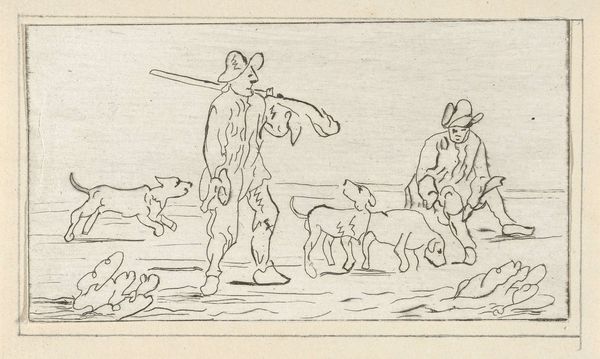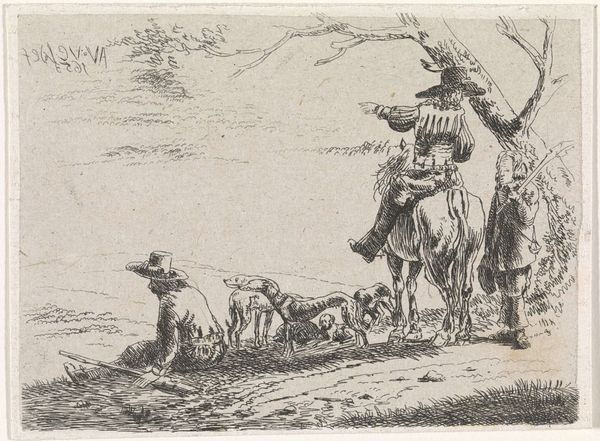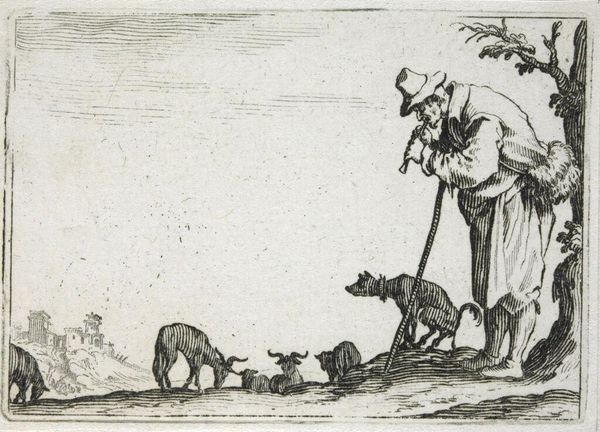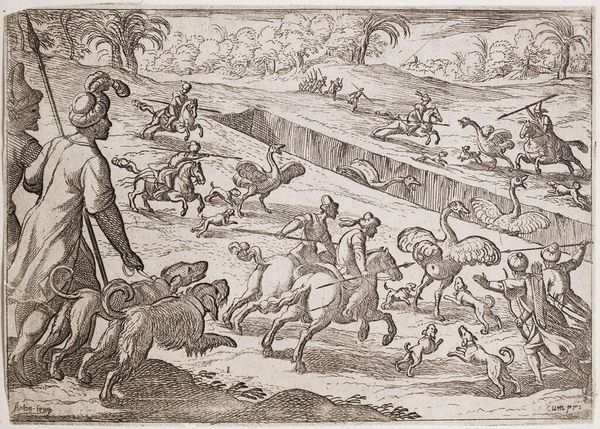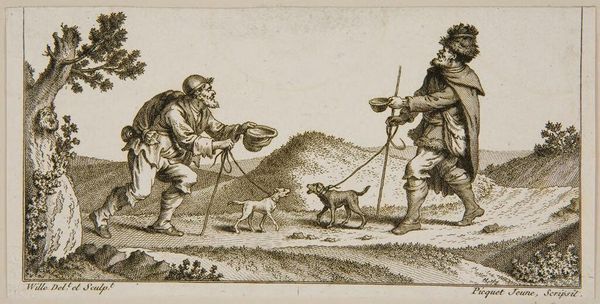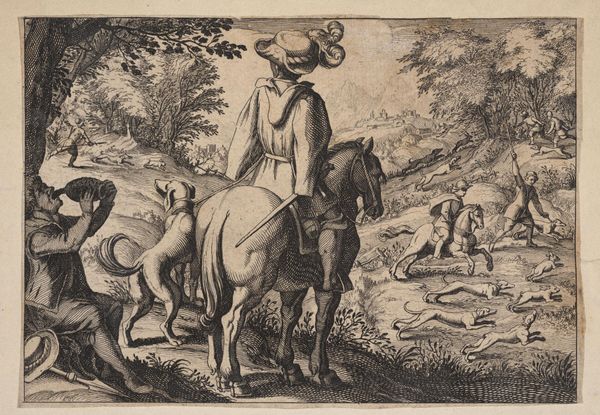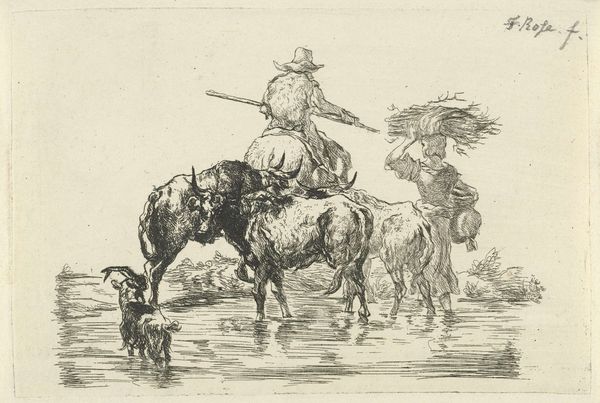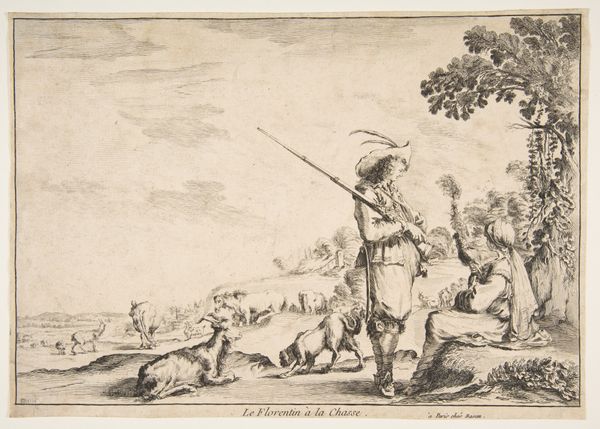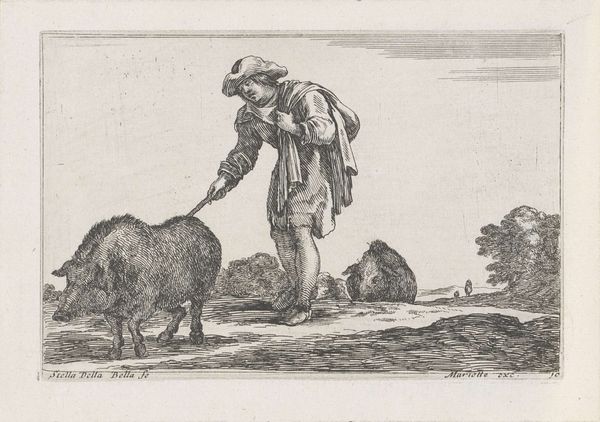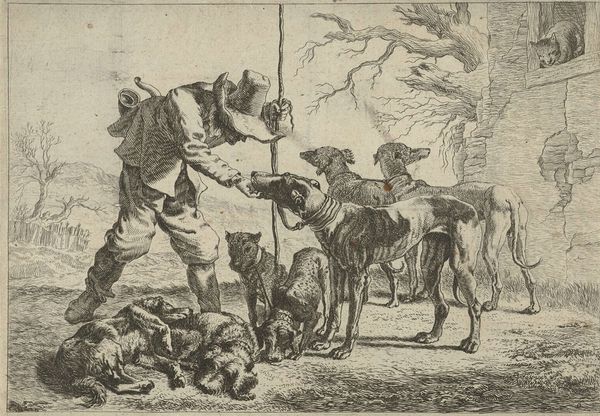
drawing, etching, paper, ink
#
drawing
#
baroque
#
etching
#
paper
#
ink
#
genre-painting
Dimensions: height 59 mm, width 107 mm
Copyright: Rijks Museum: Open Domain
Editor: Here we have "Two Hunters with Three Hunting Dogs" made between 1728 and 1789 by Jacob Hoolaart. It's an etching and drawing in ink on paper. It feels like a casual, everyday scene. What catches your eye in this artwork? Curator: Immediately, the materials themselves. This etching, reproduced presumably multiple times, democratizes the image. Who was accessing these prints, and what was their relationship to the hunt? Consider, too, the cost of paper and ink at the time; this seemingly simple image holds complex social and economic implications. How does the 'everyday scene' you mention interact with these broader production questions? Editor: That's fascinating! I hadn't thought about it that way. I guess the subject matter makes me think it was intended for the rising middle class, or maybe even lower nobility? Was this printmaking process a specialized trade at the time? Curator: Precisely! Printmaking demanded a high level of skill. Consider the labor involved: the drawing itself, the meticulous etching process, the printing. These are skilled artisans, often working collaboratively in workshops. The etching process involved applying acid to a metal plate and required time and material to be mastered. Looking closer at the line work, what does it suggest about Hoolaart’s understanding of this craft? Editor: I see a certain…efficiency? The lines are economic, almost like he’s aiming for replication ease rather than expressive detail. So, the work speaks as much about Hoolaart's artistic intention, and skill as the system of artisanal manufacture? Curator: Precisely. This artwork isn’t just an image of hunting; it’s a record of production, consumption, and the social relations of art making. Seeing it that way helps us challenge art historical canons that emphasize individual genius above all else. Editor: This has completely shifted how I see this piece. I initially focused on the subject, but now I am more intrigued by the process and its context. Thanks for the new perspective! Curator: My pleasure. Hopefully this makes you question every piece you encounter as a product of complex social forces at work.
Comments
No comments
Be the first to comment and join the conversation on the ultimate creative platform.
